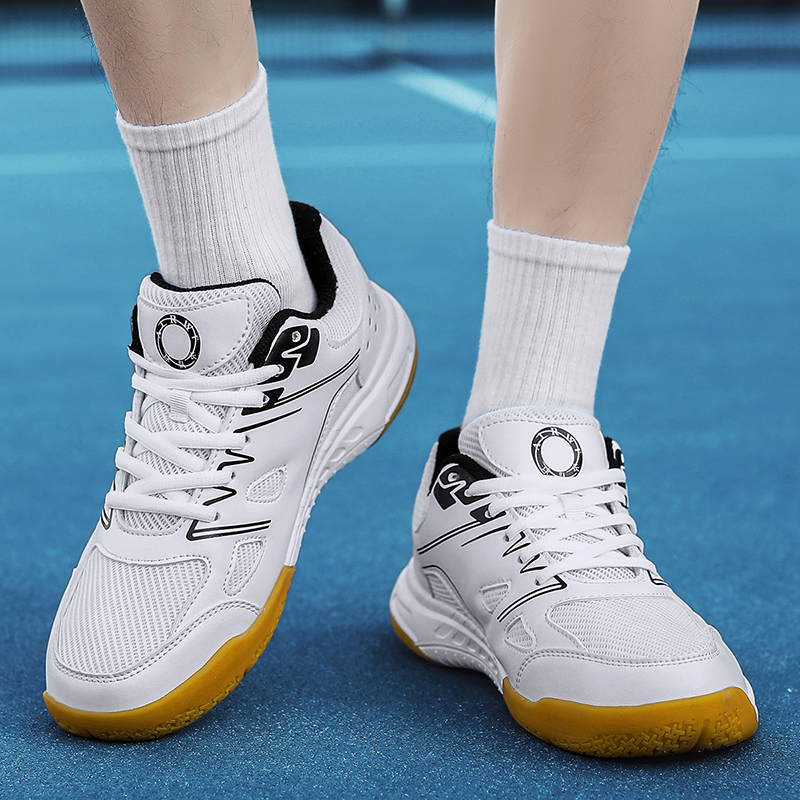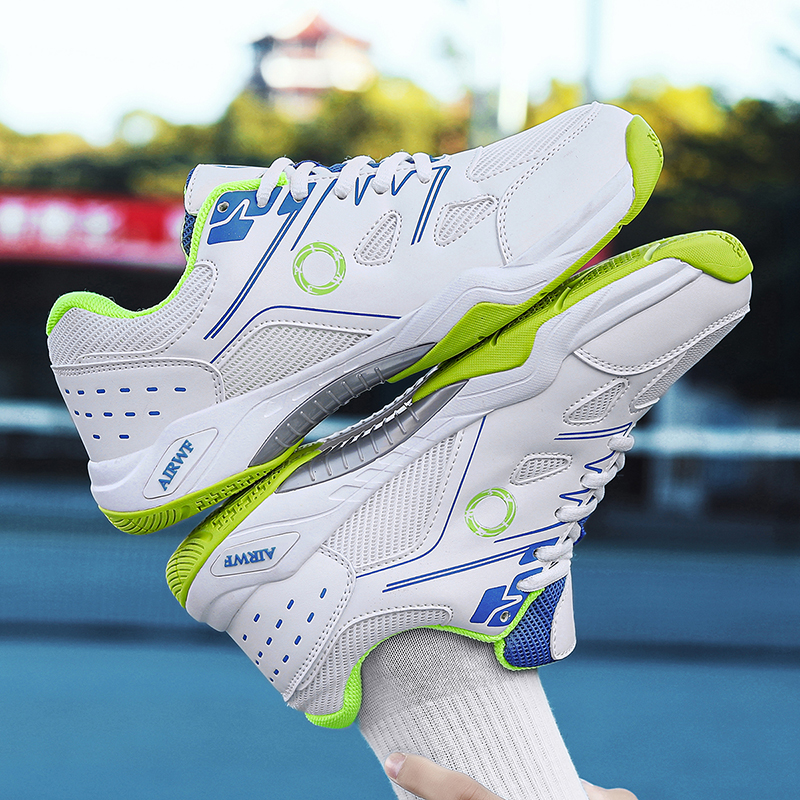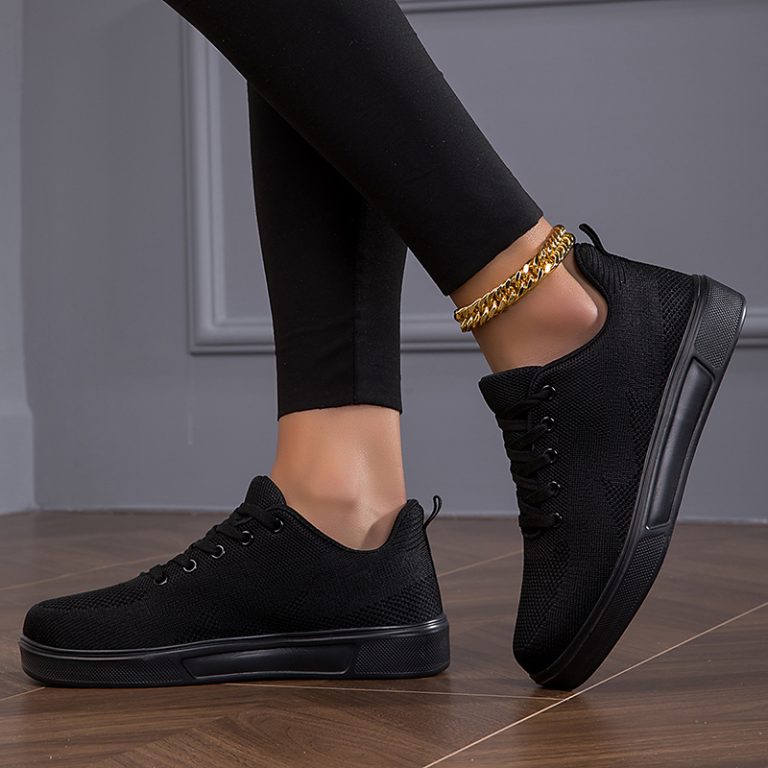Importance of Selecting Proper Tennis Shoes
Selecting the right tennis shoes is crucial for every player. Good tennis shoes provide necessary support, enhance performance, and prevent injuries. They are designed to handle the demands of the sport. This includes starts and stops, rapid side-to-side movements, and the impact of repetitive jumping.
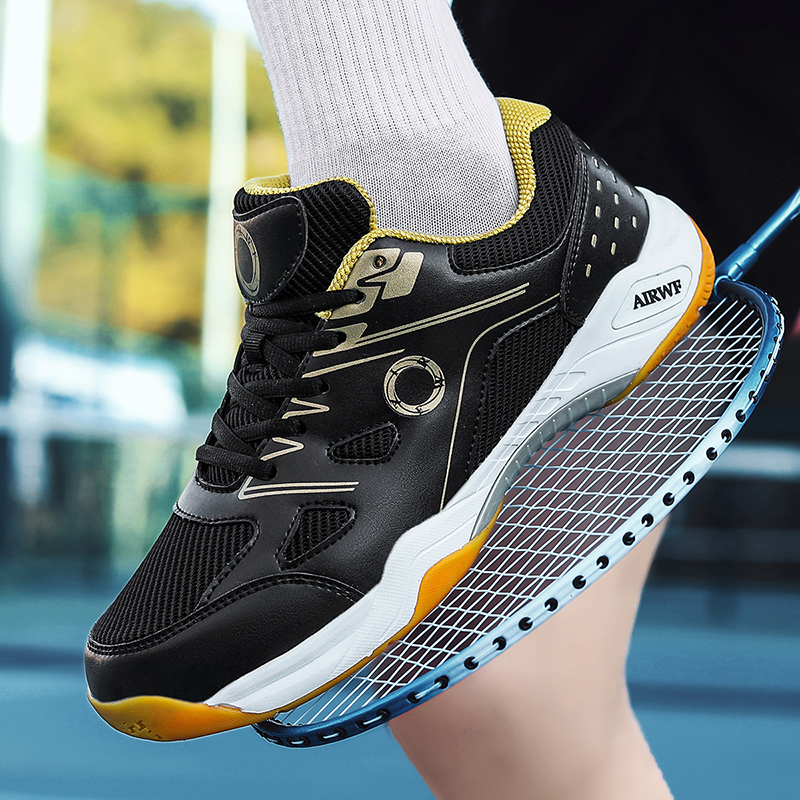
Tennis-specific footwear differs from regular sneakers in several ways. They offer enhanced lateral support. They also have more cushioning in key areas. These features are vital for the unique movements of tennis.
When you wear the wrong type of shoes, you risk discomfort and injuries. Common issues include ankle sprains, stress fractures, and knee pain. Proper tennis shoes aim to minimize such risks.
Moreover, with adequate shoes, you can play longer and more effectively. They allow focus on your game without worrying about foot fatigue or slips. Good tennis shoes can also extend the life of the shoes themselves, offering better value over time.
To sum up, good tennis shoes enhance safety, comfort, and performance. They are a worthwhile investment for any tennis player. Remember, when you care for your feet, you set the stage for your best game.
Key Features to Look for in Tennis Shoes
When shopping for good tennis shoes, focus on these key features:
- Lateral Support: Tennis involves many side-to-side movements. Shoes must offer strong lateral support to avoid ankle rolls.
- Sole Durability: Frequent starts and stops wear out soles quickly. Look for shoes with durable, non-marking soles designed for the court.
- Cushioning: Proper cushioning in the heel and forefoot reduces impact on your joints. This helps prevent injuries like stress fractures.
- Stability: A stable shoe keeps your feet secure during quick pivots and sprints. Check for a snug fit to maintain stability.
- Breathability: Good tennis shoes should allow your feet to breathe. This keeps them cool and reduces moisture within the shoe.
- Weight: Lighter shoes may enhance speed and agility. However, ensure they do not compromise on support.
Choose shoes that balance these features to match your playing style and the demands of your game.
Understanding Different Court Surfaces and Shoe Requirements
Tennis is played on various surfaces, each demanding different shoe features. Hard courts, for example, are rough on shoes. They need durable soles to resist quick wear. Clay courts need shoes with good grip, to avoid slides and falls. For grass courts, choose shoes with ample traction. They help prevent slipping during play.
Here’s what to look for depending on the court surface:
- Hard Courts: Opt for shoes with strong outsoles. Look for shoes that feature enhanced cushioning to absorb shock.
- Clay Courts: Find shoes with lateral support and a herringbone tread pattern. This kind of tread prevents clay from sticking to the soles and offers better grip during lateral movements.
- Grass Courts: Seek out shoes with nubs or small pimples on the soles. They provide better stability on the soft and sometimes slippery surface.
- Multicourt or Omnicoourt: If you play on different surfaces, consider multicourt shoes. They are versatile and provide a balance of features suited for various court types.
Remember, using the correct shoes for the right surface not only boosts your performance. It also extends the life of your good tennis shoes. This saves you money and helps keep your feet safe.
The Role of Foot Type and Fit in Tennis Shoe Selection
Choosing the right good tennis shoes goes beyond studying features and court surfaces. Your foot type and how the shoe fits are pivotal. They greatly affect your comfort and performance. Different foot shapes need different support. This is where understanding your foot type helps. There are three main types of feet: flat, neutral, and high-arched. Each type impacts your tennis playing in unique ways.
For flat feet, look for tennis shoes that offer enhanced support and stability. They often require motion control to counter overpronation. This means your tennis shoes should have a firm midsole on the inside of the foot.
Neutral feet have a more even distribution of pressure. They can handle a variety of shoes. Yet, keep an eye out for good cushioning and moderate support. Neutral feet still benefit from proper fitting good tennis shoes.
If you have high arches, you need shoes with excellent cushioning. High-arched feet tend to supinate, or roll outward. Therefore, tennis shoes that provide plenty of impact absorption are vital.
A good fit is just as important as recognizing your foot type. Make sure your good tennis shoes are not too tight or too loose. There should be about a thumb’s width of space at the end of the shoe. Your heel must fit snugly without sliding. The midfoot area should not feel squeezed.
Remember, when trying on tennis shoes, wear the same type of socks you’d wear when playing. This ensures the fit you experience is accurate for game day. Spend some time walking or lightly jogging in the shoes. Doing so helps you feel if they’re the right choice for your feet and style of play.
In conclusion, understanding your foot type and ensuring a good fit are crucial. They help you select the best good tennis shoes for your game. Proper shoes help prevent injuries and improve your on-court agility and precision. Always prioritize a secure, comfortable fit tailored to your unique foot shape.
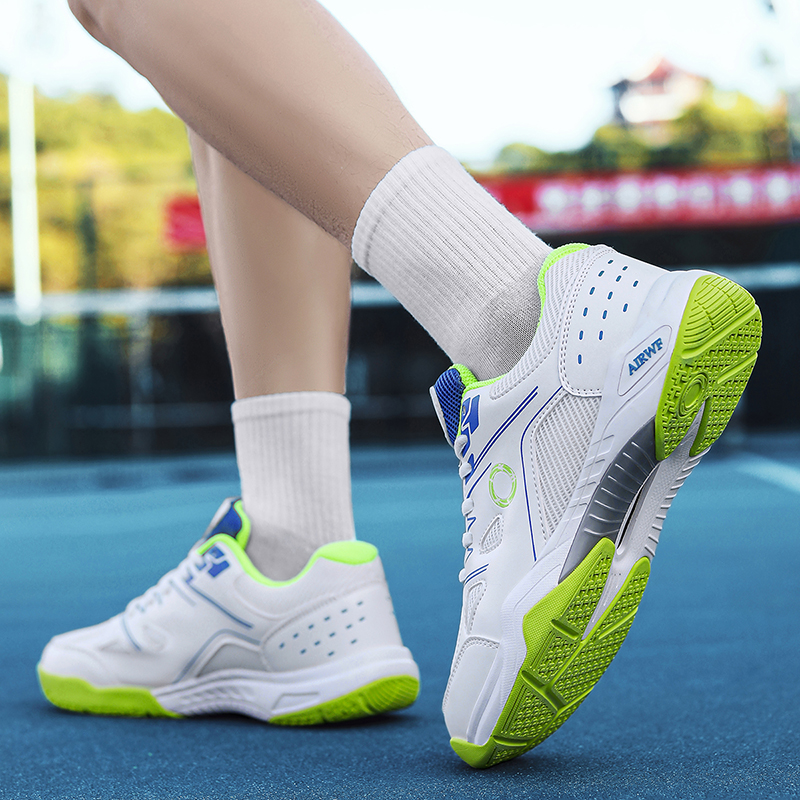
Top Brands and Models for Tennis Shoes
When selecting the best good tennis shoes, the brand and model matter greatly. Some brands have built a reputation for quality and performance in the world of tennis. Here are top picks that combine all the essential features for a stellar game:
- Adidas: Known for innovative designs and technology, Adidas offers shoes that deliver on both comfort and durability. The Adizero series is often praised for its lightweight feel and exceptional support.
- Nike: A giant in sports apparel, Nike’s tennis shoes, such as the Air Zoom Vapor series, are favored for their responsive cushioning and dynamic fit.
- Asics: Asics tennis shoes, including the Gel-Resolution line, are renowned for their stability and cushioning, making them a great choice for players of all levels.
- Wilson: With a focus on tennis gear, Wilson provides shoes that emphasize support and stability, with models like the Rush Pro offering a secure, snug fit.
- Babolat: A favorite among clay court players, Babolat’s Jet Mach series has a reputation for excellent traction and lateral support.
- K-Swiss: They focus on court-specific shoes with premium durability. The Hypercourt Express is known for its comfortable fit and effective foot protection.
These brands stand out for their commitment to enhancing player performance. By choosing from top models within these trusted brands, you can find good tennis shoes that fit your playing style and needs. Always consider your foot type, the surfaces you play on, and the features that match your game’s demands. Investing in a quality pair can make a significant difference in your playing experience.
How to Assess Durability and When to Replace Tennis Shoes
The lifespan of good tennis shoes depends on their use and care. Here are tips on assessing durability and signs for when to replace them:
- Check the Outsoles: Examine the sole’s tread. If it’s worn smooth, it’s time for new shoes.
- Inspect Cushioning: Press into the midsole with your thumb. If it feels hard or doesn’t bounce back, the cushioning is worn out.
- Monitor Upper Wear: Look for holes or tears in the upper material. This compromises support and fit.
- Be Aware of Discomfort: Pay attention to new aches or pains in your feet or legs. This can signal that your shoes are no longer providing proper support.
- Track Usage: Average tennis shoes can last between 45 to 60 hours of play. Keep a log of your court time.
- Observe Performance Decrease: If your movements aren’t as sharp, your shoes may lack stability.
Regular checks and maintenance extend your shoes’ effective life. But, when these signs appear, prioritize your safety and performance by investing in a new pair.
Tips for Trying on and Testing Tennis Shoes
When shopping for good tennis shoes, the try-on phase is just as crucial as the selection. Here are practical tips to ensure you find the best fit:
- Wear Proper Socks: Always try on tennis shoes with the socks you’ll wear during play. This guarantees the fit is right for your game.
- Check for Toe Space: Ensure there’s a thumb’s width of space in the toe area. Your toes need room to move without hitting the front.
- Heel Lock: Your heel should fit snugly. There shouldn’t be any slipping as you move.
- Walk and Jog Test: Take a walk or light jog around the store. Feel for any discomfort or instability.
- Test Lateral Movements: Perform some side-to-side movements. Good tennis shoes will provide secure lateral support.
- Feel the Cushioning: Pay attention to the shoe’s cushioning. It should feel comfortable and responsive.
- Assess the Weight: The shoe should feel light enough for agility but stable enough for support.
After finding a pair that seems right, test them further if possible. Some stores have a space where you can simulate tennis movements. Take advantage of this to ensure the shoes stand up to the rigors of your play.
Remember, no matter how popular a brand or model is, the best good tennis shoes are the ones that fit you properly and meet your specific needs on the court. Take the time to test thoroughly for a confident choice.
Maintaining Your Tennis Shoes for Optimal Performance
To keep your good tennis shoes in top shape, regular maintenance is key. Simple steps can ensure they last longer, feel better on your feet, and continue to perform at their best. Here’s how to maintain your tennis shoes for optimal performance:
- Clean Regularly: After each use, remove any dirt or debris. If you play on clay, brush off the fine dust.
- Air Out: Let your shoes breathe. Remove the insole and laces and air them out after playing.
- Rotate Pairs: If possible, rotate between two pairs of tennis shoes. This gives them time to fully dry out and maintain their shape.
- Avoid Harsh Conditions: Don’t expose your shoes to extreme heat or cold. Also, avoid getting them overly wet.
- Use Right Surfaces: Stick to the court. Walking on hard or uneven surfaces can wear down the soles prematurely.
- Store Properly: Keep your shoes in a cool, dry place. This helps prevent the buildup of moisture which can lead to odor and mold.
By caring for your shoes and performing these maintenance steps, you prolong their life. This means less frequent replacements and better quality play. Your good tennis shoes are an investment in your game—treat them well, and they’ll support every serve and volley you make.
